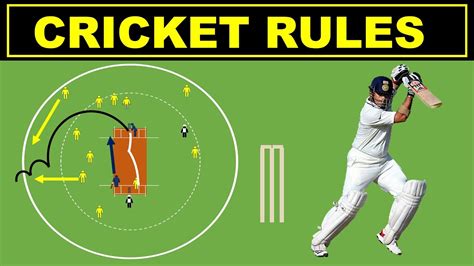Explore how technology, data analysis, video, wearable tech, and virtual reality enhance cricket training practices and improve player performance and strategies.In the fast-evolving world of cricket, the integration of technology into training has become essential for players aspiring to reach the highest levels of performance. “Incorporating Technology into Training: A Cricketer’s Guide” explores innovative methods that can transform traditional practice routines into data-driven, efficient training experiences. From harnessing the power of data analysis for performance insights to leveraging video analysis for skill enhancement, this guide provides a comprehensive look at how modern tools can refine a cricketer’s game. Additionally, we’ll delve into the benefits of wearable technology and virtual reality in skill training, as well as the impact of tech on team strategies. Whether you’re an aspiring athlete or a seasoned professional, understanding these technological advancements can provide a competitive edge in today’s cricket landscape.
Introduction to Technology in Cricket Training Practices
The integration of technology in cricket training has revolutionized the way players develop their skills and enhance their performance. Nowadays, cricketers are no longer solely reliant on traditional training methods; they are embracing innovative tools and techniques that provide them with deeper insights into their game.
Modern coaching techniques now include sophisticated analytics and software that track player metrics, enabling coaches to tailor training regimes specifically to individual needs. By leveraging the power of data, coaches can identify strengths and weaknesses in a player’s performance and create targeted practice sessions that drive improvement.
Moreover, the use of video analysis allows players to review their actions in real-time, empowering them to make quicker adjustments to their technique. This immediate feedback loop not only accelerates learning but also ingrains key skills more effectively.
As cricketers engage with wearable technology, they can monitor various physiological data during practice, which plays a crucial role in understanding their fitness levels and recovery patterns. This information is vital for managing workloads and reducing the risk of injuries.
The seamless incorporation of these technological advancements into training routines ensures that players are not just practicing harder but are also training smarter, ultimately leading to enhanced performance on the field. The shift towards integrating technology in cricket training signifies a new era in the game, where adaptability and continuous learning are key to success.
The Role of Data Analysis in Cricket Performance Improvement
In the realm of technology in cricket training, data analysis has emerged as a pivotal tool for enhancing player performance and overall team dynamics. By meticulously gathering and examining a plethora of data points, coaches and analysts can derive actionable insights that significantly influence training regimens and match strategies.
One of the primary benefits of data analysis lies in its ability to pinpoint individual strengths and weaknesses. By utilizing various metrics, such as batting averages, bowling speeds, and fielding statistics, analysts can create tailored training programs that target specific areas of improvement for each player. This personalized approach not only helps in skill refinement but also boosts player confidence as they see tangible progress in their performance.
Additionally, the integration of technology in cricket training facilitates in-depth opponent analysis. By studying the performance data of rival teams, players can prepare more effectively for upcoming matches. Understanding an opponent’s statistical tendencies enables cricketers to adjust their gameplay, whether it pertains to batting strategy or bowling techniques, ultimately leading to a competitive edge on the field.
Key Metrics Used in Data Analysis
| Metric | Description |
|---|---|
| Batting Average | Measures the consistency and effectiveness of a batsman over time. |
| Bowling Average | Indicates the effectiveness of a bowler, calculated by runs given per wicket taken. |
| Strike Rate | Assesses the scoring efficiency of a batsman, calculated by the number of runs scored per 100 balls faced. |
| Economy Rate | Measures the number of runs conceded by a bowler per over bowled. |
Incorporating deep learning and artificial intelligence into data analysis further enhances its effectiveness. Modern data analytics platforms can process vast amounts of match data in real time, enabling teams to adapt their strategies on-the-fly. Such proactive decision-making is crucial in the fast-paced environment of cricket, where every ball can make a difference.
Leveraging data analysis as part of technology in cricket training revolutionizes the way players prepare and compete, fostering a culture of continuous improvement and resilience within the sport.
Utilizing Video Analysis for Better Player Development
Video analysis has become a cornerstone in the realm of technology in cricket training, providing players and coaches with the tools necessary for keen insights into performance. The ability to review footage of practice sessions and matches enables athletes to identify strengths and weaknesses in their technique and strategy, paving the way for targeted improvement.
The following are key aspects of how video analysis contributes to better player development:
| Aspect | Description |
|---|---|
| Performance Feedback | Players can review their performances in real-time, allowing them to see what worked and what didn’t. |
| Technique Improvement | Coaches can highlight technical flaws in a player’s action, offering visual evidence to facilitate discussion and correction. |
| Strategic Development | Reviewing match footage enables players to analyze their own strategies as well as those of opponents, enhancing decision-making on the field. |
| Progress Tracking | Through consistent video review, developments over time can be tracked, providing motivation and confirming growth. |
Moreover, the integration of technology in cricket training through video analysis not only benefits players on an individual level but also strengthens team dynamics. Collaborative video sessions encourage team discussions that can lead to more cohesive strategies and an improved understanding of each player’s role within the team context.
Utilizing video analysis in cricket training environments serves as a powerful tool to enhance player development, allowing for a comprehensive approach that combines feedback, strategy, and technological advancement.
Wearable Technology: Tracking Player Performance and Recovery
In the modern era of sports, technology in cricket training has become indispensable, particularly through the advent of wearable technology. These devices allow coaches and players to gain deeper insights into performance metrics that were previously challenging to quantify. By monitoring various physiological and biomechanical parameters, cricketers can better understand their bodies, leading to tailored training that enhances both performance and recovery.
Wearable technology encompasses devices such as GPS trackers, heart rate monitors, and accelerometers. These gadgets collect data on metrics like distance covered, speed, heart rate variability, and workload, providing a comprehensive view of a player’s physical performance during training or matches. This data is crucial, as it helps identify areas for improvement and aids in injury prevention.
A key advantage of using wearable technology is its role in recovery monitoring. Coaches and medical personnel can track fatigue levels and recovery rates more effectively, allowing for personalized recovery plans. For instance, if a player shows signs of over-exertion through heart rate data or a spike in accumulated fatigue, immediate adjustments can be made to their training regimen. This proactive approach minimizes the risk of injuries and enhances the player’s longevity in the game.
Here’s a table summarizing the key benefits of wearable technology in cricket:
| Benefit | Description |
|---|---|
| Performance Tracking | Real-time data collection allows for immediate performance assessment. |
| Injury Prevention | Data analytics help identify stress patterns that may lead to injuries. |
| Enhanced Recovery | Tracks recovery metrics to formulate personalized recovery plans. |
| Strategic Training | Informs training programs based on individual strengths and weaknesses. |
By integrating wearable technology into training, teams can assess not only the player’s performance but also physiological responses to training stimuli. This comprehensive analysis contributes significantly to the overall effectiveness of technology in cricket training, ultimately enhancing both individual and team performance on the field.
Benefits of Virtual Reality in Cricket Skills Training
Virtual reality (VR) technology has become a game changer in enhancing the effectiveness of cricket training. By simulating real match scenarios and providing immersive experiences, VR allows players to develop their skills in a controlled yet dynamic environment. Here are some key benefits of incorporating VR into cricket skills training:
- Realistic Match Scenarios: Players can practice facing bowlers of varying styles and paces without the risks associated with physical training. This helps improve decision-making under pressure.
- Immediate Feedback: VR systems can track player performance and provide instant feedback, allowing cricketers to correct their techniques in real-time.
- Enhanced Focus and Concentration: VR training can help players improve their concentration levels by immersing them in realistic cricketing environments, which can simulate the noise and distractions present during actual games.
- Accessibility: Players can access VR training modules from anywhere and at any time, making it easier to fit practice into their schedules.
| Benefit | Description |
|---|---|
| Enhanced Skill Development | Allows players to practice batting and bowling techniques in a virtual setting. |
| Reduced Injury Risk | Minimizes physical strain during practice sessions by offering a safe alternative. |
| Game Awareness | Improves players’ ability to read the game and recognize patterns under game-like conditions. |
By integrating technology in cricket training such as virtual reality, coaches and players can create a more effective practice environment that fosters growth and competitive edge on the field.
Implementing Technology for Enhanced Team Strategies and Tactics
In today’s competitive environment, technology in cricket training plays a crucial role in shaping effective team strategies and tactics. By leveraging advanced technological tools, coaches and players can enhance their understanding of the game, making informed decisions that significantly improve overall performance.
One of the most effective ways teams can implement technology is through the analysis of game footage. Utilizing video analysis software allows coaches to dissect match plays and player movements. By reviewing these recordings, teams can identify patterns, weaknesses, and strengths both in their own gameplay and in their opponents’. This data-driven approach facilitates strategic planning that is tailored to exploit the deficiencies of rival teams while bolstering their own strategies.
Another tool that has revolutionized team strategies is the use of analytics platforms. These platforms offer insights derived from various data points, such as player statistics, pitch conditions, and historical performance against specific teams. Teams can leverage these insights to form game plans that maximize their chances of success on the field. By integrating statistical analysis, teams can make well-informed decisions regarding player combinations, batting orders, and bowling rotations, leading to more cohesive and effective gameplay.
Additionally, real-time tracking technology enables coaches to monitor players during practice sessions and matches. This technology provides immediate data on players’ physical performance through metrics such as speed, heart rate, and exertion levels. Coaches can use this information to adapt training regimens and in-game strategies based on players’ condition and capabilities, ensuring that the team is always performing at its best.
Overall, the integration of technology in cricket training not only empowers teams to refine their strategies but also fosters a culture of continuous learning and adaptation. By embracing these advanced tools, teams can elevate their performance, gain a competitive edge, and ultimately achieve success on the cricket field.
Frequently Asked Questions
How can technology enhance a cricketer’s training regimen?
Technology offers tools like video analysis, performance tracking, and virtual reality simulations to help cricketers refine their techniques and improve their game strategy.
What are some popular tools used by cricketers for training?
Popular tools include bowling machines, performance analytics software, and wearable GPS devices that track player movements and physical condition.
How does video analysis contribute to a cricketer’s performance?
Video analysis allows players to review their techniques and performances, helping them identify strengths and weaknesses, which can lead to targeted improvements.
Can virtual reality be beneficial for cricketers?
Yes, virtual reality can simulate match situations, allowing players to practice their skills in a controlled environment without the physical demands of a real game.
What role does data analytics play in cricket training?
Data analytics provides insights into player performance metrics such as batting averages, bowling speeds, and fielding efficiency, helping coaches tailor training programs accordingly.
How can cricketers incorporate fitness technology into their training?
Cricketers can use fitness trackers and smartwatches to monitor their physical activity, recovery times, and overall fitness levels, optimizing their training sessions.
What are some potential challenges of integrating technology into training?
Challenges include the high cost of technological tools, the learning curve for both players and coaches, and the risk of over-reliance on data instead of instinctual play.









